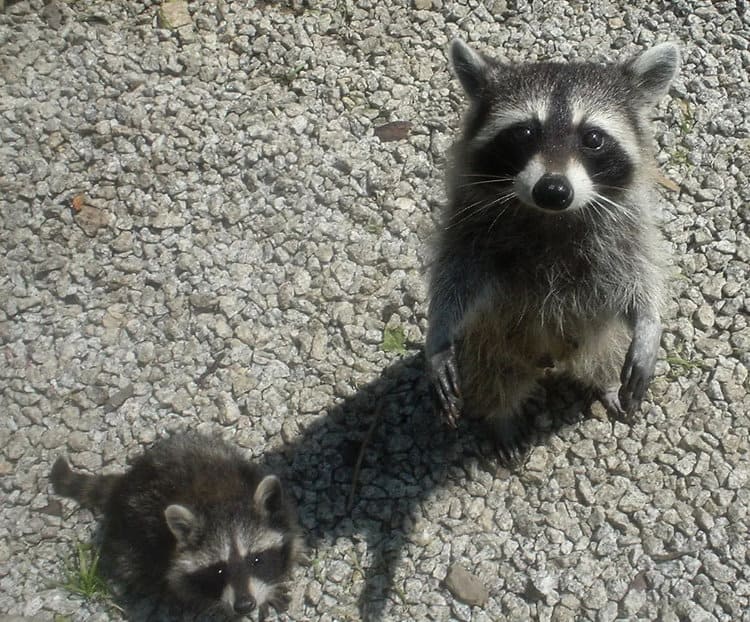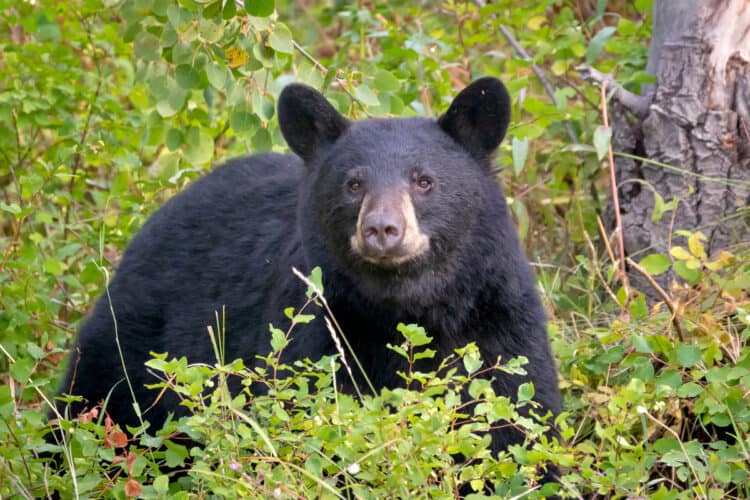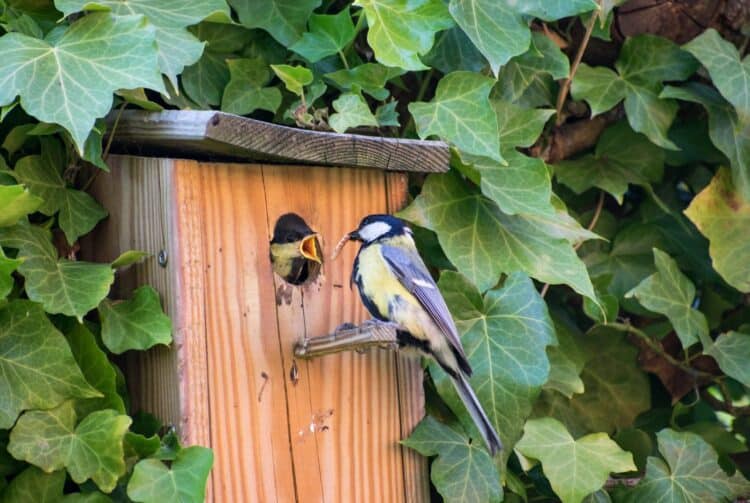Raccoons are ridiculously cute and notoriously mischievous, and based on looks alone, it would seemingly be very hard to be mad at one.
But, for those of us with gardens (or garbage cans, for that matter), raccoons can quickly wear out that welcome.
These little bandits have a bad reputation for destroying gardens. like to eat lots of fresh fruits and vegetables, such as sweet corn, tomatoes, and strawberries.
They love to dig in mulch in search of worms, meanwhile burying or uprooting young seedlings and destroying tidy garden spaces.
Once they discover a good buffet, it can be very difficult to get them to stop showing up for the dinner special every night.
In addition to being extremely frustrating, the constant garden skullduggery can become costly when those crops you paid and toiled for are all destroyed.
Sometimes, no matter how adorable, a gardener has to find a way. By all means, it should be humane, but without a doubt, it has to be goodbye to raccoons.
1. Protect with Squash Barriers
One plant that raccoons definitely do not like to tangle with is squash. The far-reaching vines and huge prickly leaves are great raccoon repellents. It’s one of the reasons that squash is often planted with the raccoon’s favorite garden treat of sweet corn.
You can use summer squash, but winter squashes (and pumpkins) have much longer vines and stay around for most of the growing season. Plant squash around the outside of the gardens to act as a protective barrier the raccoon won’t want to cross.
2. Sprinkle ____ Around Your Plants
As with deer and rabbits and slugs and so on, there are a ton of things that farmers and experts suggest sprinkling around plants to repel raccoons. Rather than getting in-depth as to the reasons these work or don’t work, suffice it to say that most only work for a short time and require rotating in and out of the line to keep the raccoons off-balance and adequately turned off.
Here is a list of things people suggest sprinkling: red pepper flakes, garlic powder, wood ash, peppermint oil, coffee grounds, Epsom salt, Irish Spring soap, etc.
3. Use Human/Dog Scents
Some people like to use human and/or canine scents to keep raccoons at bay. They often don’t want to be in close quarters with either us or our pet dogs, so putting out dirty clothes a la a scarecrow or distributing dog hair around the garden bed might, at least momentarily, give a raccoon pause before dining in.
4. Play the Radio at Night
The immediate human presence will usually persuade raccoons to go elsewhere on their nightly scavenging. While it might be fun to camp out by the garden for a night or two, it’s hardly how most of us want to live. Instead, we can put a radio in the garden and play talk shows at night so that it seems people are in the garden.
5. Put up Floppy Fencing
Raccoons are incredibly agile, great at jumping, and proficient climbers. Putting a fence around the garden can make it a little more difficult for them to raid the crops, but it’ll not likely stop them. One thing that gardens suggest is putting up fencing and leaving the top of it floppy so that when the raccoon pulls on it the fence falls back. It’s much more difficult to climb.
6. Shine Bright Lights
Like most nocturnal animals, raccoons can be sensitive to lights and steer clear of them. Hanging a really bright lantern in the garden can help to keep them away for a while. They’d rather be somewhere where squinting is necessary.
7. Motion Sensor Sprinklers
Motion sensor sprinklers are available at most garden centers. They click on it when something (or someone, in my case) crosses the sensor. The blast of water and noise will initially startle most raccoons and drive them away. They will, however, learn where they can and can’t go to avoid blasting, so it’ll require moving the sprinklers regularly.
8. The Last Resort
Humane traps are a thing, and they often make the list of humane ways of handling troublesome critters. Unfortunately, this also requires transporting the animal miles away from your house and garden, which is likely miles away from their house, too. It’s not always a success story for transplanted animals.
Also, the laws for moving and releasing a trapped animal vary by state. It might be illegal where you are, so it’s best to check before taking this route.
This article by Jonathon Engels was first published by OneGreenPlanet on 20 June 2023.
What you can do
Support ‘Fighting for Wildlife’ by donating as little as $1 – It only takes a minute. Thank you.
Fighting for Wildlife supports approved wildlife conservation organizations, which spend at least 80 percent of the money they raise on actual fieldwork, rather than administration and fundraising. When making a donation you can designate for which type of initiative it should be used – wildlife, oceans, forests or climate.







Leave a Reply